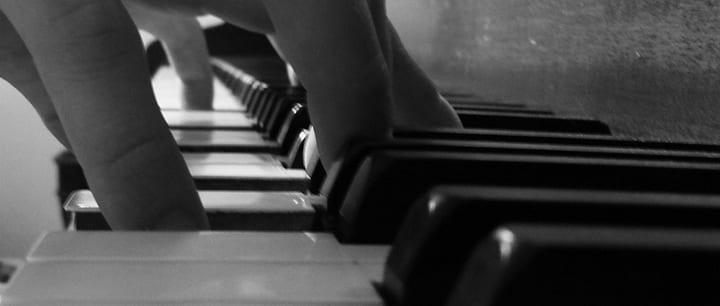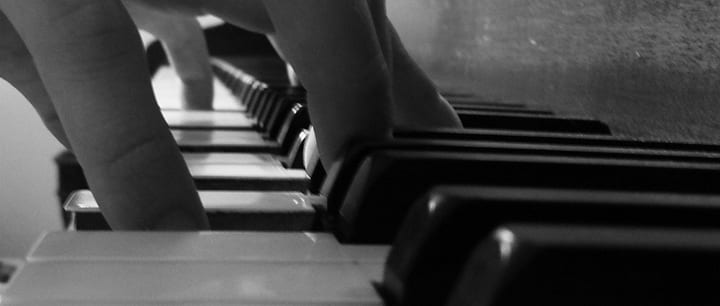When you’re learning how to play the piano, finger exercises are especially important–especially if you’re having trouble controlling that pesky fourth finger! Learn the steps to take in this guest post by Ann Arbor, MI teacher Amy C...
Ah, the fourth finger.
Most pianists know all too well the issues that surround the fourth and finger. Unlike the first, second, and third finger, these two ancillary fingers tend to not be as well developed. While some players might consider those fingers to be obsolete, the reality is that if you learn how to incorporate them in your daily practice, you’ll become a stronger player.
So how do you strengthen that pesky fourth finger?
You’ve got to do piano finger exercises!
In this post, we’ll tell you all about the piano finger exercises you can do to strengthen the fourth finger – as well as the other fingers on your hand.
How Do I Strengthen My Fingers for Piano?
Here are a few general tips to help you strengthen your fingers for playing piano:
- Use a piano with a weighted action or hammer
- Stretch and warm up your fingers before playing
- Practice finger technique exercises like arpeggios, articulation exercises, and scales
- Play piano regularly and practice often, but in shorter sessions to give your hands a break
- Practice away from the piano
- Do technical exercises, like Hanon piano finger exercises
- Change up your tempos and keys
Most importantly, be consistent! The more often you practice piano, the better. Signing up for piano lessons is one of the best things you can do to make sure you’re staying on track. Of course, watching videos (like the one below) to perfect your style is a good idea, too. You can learn everything about playing the piano, from notes and melodies to harmonies and keys!
How Do You Exercise Your Fingers to Play Piano? Piano Exercises for Beginners
Here are a few piano finger exercises you can do to become a better piano player.
Piano Finger Warm Up Exercises
Always warm up before you start your piano practice routine. You’ll find some excellent warm-ups here, but some other good options include:
- Scales
- Half speed/full speed – in this exercise, you’ll do scales again, but play some notes at half speed and some full speed
- Arpeggios
- Improvisation exercises
- Sight reading
Finger Strengthening Exercises for Piano
Here are some resources, all courtesy of TakeLessons, to help you become a stronger piano player:
- Beginner Piano Finger Strengthening Exercises
- Relaxation Exercises
- Exercises to Improve Your Speed
- Faster Finger Exercises for Self-Taught Piano Students
- Left Hand Piano Exercises
- Hand Position Exercises
You can find even more general finger strengthening exercises here.
Piano Finger Exercises Without Piano
These off-bench activities can help strengthen your entire body for playing the piano.
In addition, you can practice piano anywhere at any place in time by:
- Tapping out rhythms on a tabletop
- Studying sheet music
Here’s a video with even more helpful piano finger exercises you can do from anywhere:
Rely on Piano Finger Exercises Books
Pick up a few piano finger exercises books. These have all kinds of exercises you can do so you never get bored – and can instead focus on constant improvement!
Some good options include:
- HANON The Virtuoso Pianist in sixty exercises For The Piano – Book 1
- Béla Bartók’s Mikrokosmos: 153 Progressive Piano Pieces
- Best Traditional Piano Etudes, Book 1 (Ed. Lynn Freeman Olson)
- Musical Fingers, Book 1 – 4(Frances Clark Library for Piano Students)
- Jazz Piano Technique: Exercises, Etudes & Ideas for Building Chops (John Valerio)
Of course, you can always try Hanon piano finger exercises, too.
Some piano players aren’t fond of Hanon piano finger exercises, but the reality is that these exercises are so popular because they do work well for most people.
The Best Piano Finger Exercises for Taming the Fourth Finger
When I first began to learn piano, my fourth finger seemed bent on being anywhere but on the keys. Whenever I was not using it, the fourth finger–and by extension, the fifth finger–simply floated in midair, hovering above the ivories. This meant that whenever those fingers were needed, they were nowhere to be found. To sum it up, this was no good!
My piano teacher devised many ways to make my fingers stay where they were supposed to. Sometimes she would place a penny on the backs of my hands and make me play scales that way. If my bridge began collapsing, or my fingers began doing funky things, the penny inevitably began to slide off. Honestly, the activity made me giggle, and I often could not get through it for that reason.
In any case, my fourth finger woes didn’t last long. Through a combination of scales and rigorous practice, it was soon where it needed to be at all times.
Recently, though, I had a similar problem with one of my own piano students, and the habit was particularly difficult for him to shake. No matter how often I corrected him, no matter how rigorously he practiced his scales and pieces, this particular child could not seem to keep his fourth finger from hovering over the keys whenever he played.
I was starting to wonder if we would ever overcome this obstacle when my mother, who is also a piano teacher, revealed to me a simple exercise that solved my student’s problem within the space of a couple weeks at most.
These are the most essential finger exercises piano players should master if they want to tame the fourth finger.
The Best Fourth Finger Exercise to Try
Looking for the best piano 4th finger exercises? There’s really only one you need to know, and I’ll tell you about it below.
Here are the simple steps to taming that flyaway fourth finger:
- Place your right hand on the piano, with your thumb on C (for now, your left hand can remain in your lap).
- Play a normal five-finger piano exercise, ascending up to G and then descending down to C.
- Do it again, but this time hold your thumb down on the C throughout the entire exercise, as you ascend to G and then descend back to C. You will notice that it is very difficult to lift the fourth finger while the thumb is sustaining a note!
- Repeat this exercise in the left hand by holding down the C with your thumb while descending down to F, then back up again to C.
- When this becomes easier, you can play hands together, with both thumbs on C.
If you play this piano finger exercise every day before practicing, you will likely begin to see results very quickly.
More Piano 4th Finger Exercises and Tips
Pay close attention to all of your fingers, especially the fourth finger, as you play. Most people have issues with the fourth finger simply because they aren’t concentrating on that finger as they play. Play your notes thoughtfully and watch how your fingers depress the keys.
As you do so, make sure the first finger joint is in a hooked position – this can be trickier with the fourth and fifth finger, but as you get better at hooking the other joints on your other fingers, you can work toward this goal for your fourth finger, too.
Try playing a five-finger note pattern like C-G. As you play the F with the fourth finger, watch how you depress it – are you using just the tip of the finger? Keep your finger position on the keys and pay attention to how the finger feels as it depresses the key. Once you get used to this feeling and to playing with a heavier touch, you’ll get better at committing it to muscle memory.
As you play make sure your hand and wrist are guiding each finger as it is depressed. Use a rotational wrist motion to make sure your fingers stay firm. Over time, you’ll also be able to add some arm weight.
Whenever you play a song on the piano, try to add additional power to the weaker fingers. You can add an accent or tenuto marking to notes played by the fourth finger. This can be especially helpful when you are playing arpeggios or scales.
How Can I Get Flexible Fingers for Piano?
Everyone knows that it can be hard to force ourselves into positions that feel unnatural, which is why basic piano finger exercises such as these are so important. There is no doubt that poor hand position keeps you from moving forward with piano, but don’t get frustrated if you or your children are struggling–with this easy exercise, those hands will ultimately learn to do what we want them to!
Flexibility is key – and by doing the piano finger exercises mentioned above, you’ll be able to strengthen each and every one of your fingers to become a stronger pianist. Of course, taking lessons with a piano teacher who can guide you toward the best practices and techniques for finger strengthening never hurt anyone, either!
Sign up for piano lessons today – and keep practicing to keep that fourth finger strong and flexible!
 Amy C. teaches beginner to intermediate piano lessons in Ann Arbor, MI. She specializes in working with young children (5-10 age range). Learn more about Amy here!
Amy C. teaches beginner to intermediate piano lessons in Ann Arbor, MI. She specializes in working with young children (5-10 age range). Learn more about Amy here!
Photo by Akash k
Suzy S.






